
Here’s how I apply my deconstruction principle to teaching a pose. Before I teach Vasistasana, I take my students through a step-by-step process that prepares the body-mind for the classical pose. Each gradation can be the final destination if the previous step is not yet fully mastered.
Here is the process:
- Rest in Ardha Savasana- to down regulate the nervous system and connect to the breath.
- Self-massage of the rotator cuff muscles with the Yoga Tune Up® Therapy balls-to palpate these tissues, and unwind tension and knots.
- Sidewinder Minivini- to strengthen and activate all of the muscles of the tubular core and the posterior kinetic chain of the torso.
- Jithara Parivartonasana Minivini- to awaken and energize every major muscle of the torso and hips using a dynamic rotational pose.
- Shoulder Flossing Variation 1 and 2- to excavate the shoulder joint from every conceivable angle in a closed kinetic chain and teach internal vs. external rotation of the shoulder joints.
- Megaplank with Active Serratus-to explain where the serratus anterior muscle is, why it is so important, and help students embody the connection of the shoulder girdle to the core.
- Vasistasana Prep -Variation #1- to build the kinetic chain of the external obliques and teach the shoulder how to stabilize the pose.
- Vasistasana Prep-Variation #2, #2.5, #3, #4-All four of these variations continue to up the ante by opening more kinetic chains which create more shear force in the joints.
- Vasistasana
As you can see from the example above, my teaching philosophy emphasizes the importance of exploring “inner space”. From the moment we blink our eyes open in the morning, until the end of the day when we go to sleep, we must be concerned with what is happening OUTSIDE of ourselves. This provides a safe container within which you can introvert your attention: it is a mini-vacation that allows you to get out of your “thinking mind” and into your “feeling body”. Students are continually amazed at how a sacred pause to simply close your eyes and observe your breath, or a short practice of self-massage using the Yoga Tune Up® therapy balls can effectively down regulate the nervous system. As a result, new patterns and healthier ways of inhabiting the body imprint into the student’s body/mind; not just during your asana practice, but also in the activities of daily life.
What are the component parts of your short story? How do you move through complex movement patterns? Can the building blocks instead become the “masterpiece”?
Read about the most important part of a yoga pose.
Learn about Yoga Tune Up at home.



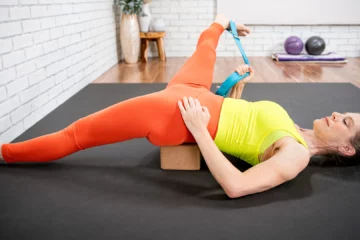
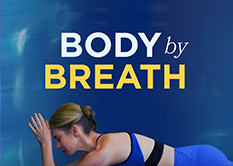
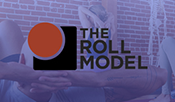
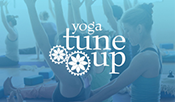


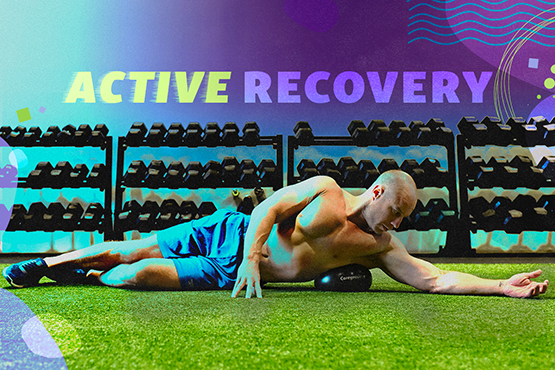
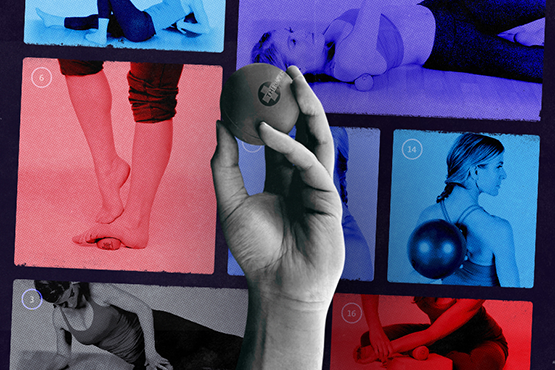
Thank you for sharing your approach for deconstructing Vasisthasana. Before YTU I always thought of many asanas to prepare for another asana, but now I have experienced that it’s not just a one way road. There are infinite possibilities of movement that can prepare us for a “peak pose”, exploring different means to getting into it and it doesn’t need to be specifically asana or even doing a connecting vinyasa. Each of the YTU poses can bring more awareness into our blind spots and strengthen our weak spots. Thanks again for sharing!
Not only does Yoga Tune Up training provide for students and teachers a modern intelligent programming for an ancient practice, but it creates a space for you to take “a mini-vacation that allows you to get out of your “thinking mind” and into your “feeling body”. That is a bigger benefit than the poses themselves.
I love this deconstruction of side plank but I also love the description of exploring inner space and the idea of turning attention inward. I think this is one of the most important parts of what we teach. The practice has never been just about the shapes, but how we experience the shapes from the inside.
Thanks Trina, Such a beautiful way to deconstruct side plank. I will definitely take inspiration from this while creating my own sequences keeping in mind the building blocks and the different parts of the body that need to be strengthened or stretched to achieve or at least have a better shot at the peak pose. x
This is a great strategy to reach to the peak pose by breaking it down. It does require skill to select and sequence the poses. I love the way you have engineered the poses before Vashisthasana in a way that actually prepares the body for the final show ! Thank you for sharing!
Hi Trina,
Thank you for sharing your deconstruction insights. From my own personal experience teaching, it is rewarding when you see students become curious and it’s like a light bulb goes off as they begin to connect to the targeted muscles/movement. Adding a variety of building blocks in the process expands learning opportunities and every student can feel like the class is tailored to them as they journey into self inquiry and reflection. You are an inspiration and full of wonderful nuggets of information. Thank you.
The explanation of taking your students through a step-by-step process to lead them to the peak pose requires true skill. It requires a depth of knowledge on anatomy, a keen ability to “read students, and then deliver succinct cues to students. For new yoga teachers, this is quite the daunting task. It’s truly an exercise of patience but can consistently lead to creating a safe space, where students have the context of why you are taking them there. Thank you for sharing this! I needed some pointers.
I love the idea of forming a platform to build the final pose on. It keeps the students safer, and as you indicate, they can stop or modify at any time if the next pose is too difficult.
I love it how in Yoga Tune Up the deconstruction of poses to work towards the final pose. I am starting to incorporate that thinking into Pilates as well. Trina, you have been a great inspiration and I consider you a mentor. Your thinking has motivated me to look at poses or Pilates movements that are not really working correctly and think how to break it down to reconstruct the movement back up. It’s not about the final pose or movement. It’s about how we move and what we achieve.
Thank you for such a clear breakdown! I have been exploring this approach in my own teaching — lots of exploration leading up to maybe 1 or 2 yoga poses in a class. I feel like I am floundering a bit, but also beginning to understand better how yoga asana relates to broader movement concepts. I have just started YTU teacher training to explore this further. This post is really helpful in my learning and understanding.
I’m in YTU training now and this approach is exactly what I was craving to learn and didn’t really receive in my other TTs. Yoga has taught me to take things one step at time and now I will be able to incorporate this from an anatomy and movement standpoint too
Great process for a yoga lesson. Doing it this way everybody can listening to the body and feel what it tells about this pose and then go into the next and so the body is ready for the next step and if not you can decide to stay at the level and try the next time to do more and so on.
Thanks for the great article Trina, this is exactly the type of structure I am looking to use to put my classes together. The journey is the reward and I believe students will feel more accomplished and be alittle less hard on themselves when the poses are presented in this building way as opposed to showing the final pose and then showing modifications for those who are struggling.
I think this is the aspect that I am enjoying about the YTU level 1 class the most, actually – that there is a focus on taking a movement apart and starting from the very beginning to build it back, and build it back correctly. I think this is the most frustrating concept about the yoga studio I had been going to – the message from the instructors is very ‘get into the pose and hold it’, and though the other message is to keep your eyes to your own mat, it’s difficult to do when there are 40 other people mimicing exactly what the instructor has just said. I have often left class over the years relaxed, yet frustrated that I couldn’t do what my neighbor was doing – and annoyed that instructors simply stress practice to obtain further flexibility. Flexibility is not necessarily what I needed, a reset of my brain was what I needed – and I have found that in the YTU trainings!
Love that this teaching method gives students a range of learning opportunities, invites self inquiry and becomes less about how the pose should look and more about how it should feel, and that this offers proprioception in different postures giving a vast amount of biofeedback to prompt students to recruit necessary muscles to move safely into the stronger version.
When I was originally taught how to build to a peak pose, it was never broken down to this level. It’s like extreme prepping, and very intelligent; by the time you get to the peak pose, you almost don’t have to coach your body into it because it already knows the movements.
Wow! I love this deconstruction, complete with a beginning, middle and end. I am going to follow this format, especially as I begin to integrate YTU into my “regular” classes. A most complete and thorough way to experience a peak pose! Thanks, Trina!
I love how deconstructing the poses lets you get into the nuts and bolts of poses. Even if it’s not a peak pose that your trying to accomplish these breakdowns can establish connection,stregnth, flexibility and range of motion from the inside out helping you to feel better in YOUR body. Thank you Trina.
YES!! the building blocks can become the “masterpiece”. Love this! Knowing what’s going on in and out of our bodies closes the gap between being aware and unaware and allow the “advance” teacher to show up.
YES! the building blocks can instead become the “masterpiece”! Love that! Being aware of the what’s going on in and out of our bodies makes for closing the gap between aware and unaware and make the “advance” teacher.
It is great to see poses broken down to such detail. This has allowed me to identify blind spots I would have otherwise rushed over.
You make it look so easy. Thank you for the breakdown. It’s easy to get overwhelmed but the nuts and bolts are just pieces to the puzzle.
What a clear and simple targeted practice. And your words are poetic – just reading them is down-regulating. It’s funny that we are in the day of training where we are practicing finding our own unique voice and I read this and thought “I wish I could sound like her” 🙂 Inspiring!
Love the breakdown! Learned a lot by this example of side plank. Can’t wait to do it tomorrow. Thank you!
I enjoyed reading through Trina’s breakdown of arriving to Vasisthasana (side plank pose). This is a great blog for teachers to see how to incorporate the YTU poses or exercises to turn on the muscles that would otherwise be ignored in traditional yoga poses in their classes or self practice.
As I am preparing my presentations for Day 5 of YT Level 1, this was a great blog to choose! I searched for something to read by Trina, having been following you on FB and being inspired by you:) This blog post helped me on my embodying path of my teaching. I found a blind spot in a term you used, so I paused to go to my manual and the internet to read about it…posterior kinetic chain: all the muscles that you don’t see but in the mirror, but account for most of the backside of the human body: the hamstrings, gluteus maximus, erector spinae, latissimus dorsi, rhomboids, and trapezius muscles.
I was also inspired by this inspirational idea you wrote: “From the moment we blink our eyes open in the morning, until the end of the day when we go to sleep, we must be concerned with what is happening OUTSIDE of ourselves. This provides a safe container within which you can introvert your attention: it is a mini-vacation that allows you to get out of your “thinking mind” and into your “feeling body”.
And this one, especially, giving students a WHY: “Students are continually amazed at how a sacred pause to simply close your eyes and observe your breath, or a short practice of self-massage using the Yoga Tune Up® therapy balls can effectively down regulate the nervous system. As a result, new patterns and healthier ways of inhabiting the body imprint into the student’s body/mind; not just during your asana practice, but also in the activities of daily life.”
Thank you for once again, inspiring me! Off to read more of your posts.
Terrific nutshell sample of comprensive, logical, healthful goal-oriented teaching. Thank you, Trina. It’s so you! 🙂
This series is wonderful as it not only informs the body to what it is doing but also gives a why. When the student can learn the hows and whys they will be able to translate that into their working lives. It also helps to get the student the think and reflect about function. Let’s show you what the pose is composed of in all it’s glory and with the best oiled muscles and joints. It is sending a message to take care of the body, love and get to know every piece, If you know this then it will also translate to others.
Using building blocks to mindfully and safely open up the body before you approach a complex yoga pose like Vasistasana is the smartest and safest way to create healthier patterns in our bodies which in turn will effect how we approach our daily activities.
Love this sequence!
Trina; I like how you use buildup poses to accentuate the journey to the pose, rather than jolt the body into the pose. Your transition towards the pose, works to introduce the body’s musculature to what will occur in the pose itself. Nice work! Wonderfully thought-out sequence.
This is really, really helpful Trina – to see the pose deconstructed like this opens up my mind to how to do the same thing for other poses. I’m also thinking of how to incorporate some of the mini-vinis and the balls into my Pilates mat practice. We have a pose called Teaser which is essentially Halasana. Joseph Pilates designed specific sequencing for the mat series which does allow for some preparatory build up to the Teaser but I believe adding some of the things I Iearned in YTU will be invaluable – particularly showing people how to find their tubular core rather than telling them to scoop their belly!
I am in the process of breaking down utrasana right now. I am making sure I have plenty to open up the quads and the psoas as well as shoulder flossing for the external range of the shoulders!! Thanks so much for inspiring me!!!
Wow Trina, I loved reading your breakdown for why you do the prep poses. It really drives home what we are learning in the teacher training!! Very descriptive and super inspiring, thank you!
Well thought out deconstruction. Just finished day 3 of the YTU level 1 training and it’s incredible the YTU method to building a peak pose that is well integrated. Setting the foundation is key. Thank you.
Thank you Trina. I am day 2 into my YTU level 1 training, but coming from a mostly fitness and personal training background. The deconstruction of the poses such as the one you described above made me realize how much we take for granted in regards to how the students “Should” feel movements, and “where” they should feel it. This kind of deconstruction made me realize the gradation that goes into the pose. It really just isn’t a side plank!
Thanks Trina! Reading this post after experiencing this today in our YTU training was so great! It really helped me integrate my learning. My side plank is forever changed! And I will never again teach side plank without taking smaller steps to build up to the pose first! It sounds silly now, but I hadn’t really given the shoulder much thought in this pose. Whoops. I also appreciate that you both write and speak about “body/mind” or “mind/body” instead of separating the two. I believe that the artificial separation of body and mind is so damaging to us – it moves people away from an embodied experience. Thanks again for putting such awesome info out there!
the YTU concept of breaking down a pose puts structure and purpose around something that i have been doing intuitively as a teacher for years. i am really enjoying adding in new concepts and variations of poses to make this process even more sophisticated as my teaching journey progresses. this week i have been working on breaking down boat pose for beginners, and it has been a lot of fun to watch people who think that they can’t get into the pose get into it, and see how the subtleties of pose are illuminated for my experienced students.
This is a well thought out sequence. I really like how Trina breaks down everything and explains why. This sequence can be used in a mixed levels class. Everyone can get something out of the class in a safe way.
Thanks Ariana. Everything you are learning this week in the Level 1 training will help you develop the tools to string together your classes in a manner that doesn’t cause fatigue or overuse before arriving at the peak pose. Trust that this process will become intuitive over time the more you teach and practice the YTU method of deconstructing poses into their basic component parts.
I like how you build up to Vastistasana in this simple sequence. When trying to do this for my students I often struggle with figuring out how to string the poses together in a way that will not tire out the muscles and cause fatigue before getting into the peak pose. Do you have suggestions for how to avoid this?
I practiced a similar arrangement of poses in a YTU Level I training class this week and it truly invigorated the feeling body and pulled me out of my constantly thinking mind. Such a respite, although my body was working hard and strengthening at the same time. I connect with your concept of the “building blocks becoming the masterpiece”. This statement mirrors the idea of allowing the process to be the focus, rather than the product and bringing us directly into the present moment – something I’d like to cultivate off the mat as well. Thank you.
This sequence is so systematic and fluid! I am new to teaching yoga and the YTU methodology and approach makes so much sense to me. Considering the body as a whole, as in fact is, when designing a sequence requires a good deal of anatomy knowledge, so that you know which muscles and joints are supporting the pose the most. I have been in yoga classes when you end up in pose and feel stiff while knowing that you can go deeper in it. I often time blamed it on my body. But now, knowing better after I took the YTU TT, I sure have to be careful when designing the sequences for my classes and make sure I have covered all point before the peak pose.
It can be challenging doing activities that I know will cause discomfort and dare I say…pain. Once you feel and see the pay off in the body it’s easy to become an addict, wanting the next fix of the Yoga Tune Up balls. The ergonomics of my laptop literally on my lap right now is creating a ball moment.
It makes sence that all the poses leading up to the peak pose would prepare the body for just that movement but years of practicing other forms of yoga have kind of clouded my way of looking at sequencing. This blog post will serve as an inspiration and hopefully make the final day of the YTU level 1 TT a little bit less intimidating.
Great post. There is clearly and understanding of the asana and good prep to get there.
For me, in addition to the a obliques, this is so much about the serratus as you note. Queuing this was difficult for me at first as many students don’t seem to have body awareness to respond to many of the ques I would offer. In plank, for example I would put my index finger between the shoulder blades and tell the student to push into my finger. It often resulted in the opposite. Queuing to draw the shoulder blades away from the spine has had more success. However more simply, cueing to actively push the floor away with considerable force seems to effect the activation of the serratus in plank ( and triceps if the elbow is at all flexed) as well as in vasistasana, and activate the obliques, as well.
Trina, your template is carefully and inteligently designed. Each pose has a purpose to prepare the whole body to reach the pinnacle pose. It gave me ideas for tomorro’s final presentation. Thanks!
When I’m building a sequence for a class, I’ll usually pick a “peak posture” as my theme or something that we are working up to. Warming up the body with gentle stretches then sun salutations then some core work…It’s hard to look at what I’ve done in the past because with my basic knowledge of the body I’ve come to learn that I could be the reason for a lot of injuries in my students. My peak pose in a level 2 class would always be something super twisted and crazy like 8 angle-pose or full camel. The students wanted something “hard” even thought they may not have been ready. Really love this sequence, I might just have to borrow it from you!!
I love breaking down a pose by way of preposing. Getting prepped in stages using other poses and movements to dynmacally warm up and prep the body parts that are needed to really get the full benefit out of poses. Ive been using that it in my classes and now look foward to adding new approaches.
I really appreciate this idea of dconstructing a pose like Vasistasana that requires so much strength and stability. I’ve been in classes where this is used during the warm-up and it is often so hard to accesss on the first round. This article also made me realize that I need to prepare myself better for practice and hopefully in teaching situations bring more of this sense of awareness to the upcoming task – a skill that can easily be transferred to ‘real life’.
I have many poses I need to deconstruct and your article is awesome. Although it’s better to learn the right way in the beginning it’s never too late to start over.Balanced body, balanced breath equals balanced mind.
Robyn, I think that all of the questions you asked will be answered by the time you reach Day 7 of your teacher training. Using the deconstruction method to build up to a peak pose is one of several ways you can construct a 75 minute class. Have fun deconstructing and reconstructing!!
I like the idea of connecting with our “inner voice” by awakening the body. I also like the the systematic stretching and strengthening of specific muscles and joints needed for Vasistasana prior to actually doing the pose. It will definately make the the full expression of the pose more seemless.
I loved this article and the ways that this teacher methodically considers all of the muscles that need to be warmed up before a pose. I also love how she starts with Savasana to down-regulate the nervous system and help students feel calmed and connected to their breathe.
Trina, thank you for your break down of Vasistasana. I recall taking a vinyasa class with a YogaTune Up teacher who used a few of these techniques in prep for this pose as well as others for a 60 minute class. It was profound and intriguing how quickly my body responded to the stimulus to be able to translate into more complex poses. YogaTune Up rocks! I love the format and detail to keep students integrated and safe.
This is a very nice breakdown of preparing for vasistasana. Giving so many options for the main pose, helps everyone feel good about their practice. Also it helps someone with a regular practice, look inward with a pose they are familiar with and revisted in detail.
Hi Trina I love this! How do you go about working this into a 75 minute class? Would you use the deconstruction method on say the apex pose of the class? Certainly there is no way to be this detailed for every pose in class…Where would you slide this sequence in and would you possibly break it up into sections throughout?
Thanks for sharing, this is very helpful and shows how many layers can be worked on in order to achieve a pose!
This is exactly why i love yoga tune up! prior to my level 1 training, i found the process of deconstructing poses somewhat daunting. now with a bigger tool set to work with, i know understand whatnis happening in every pose and am now better equipped to teach an intelligenly sequenced class!
I often get overwhelmed when thinking about deconstructing a pose, wondering how to connect each pose like pieces of a puzzle, with the final pose being the finished puzzle. One of the best lessons I learned from YTU training was that there are countless ways to deconstruct and teach a pose – what matters is that you have put intelligent thought into the why’s and how’s. Thank you for sharing the way you break down a pose Trina!
It is so helpful to get this inner look at someone else’s method of pose deconstruction and planning. I especially love that you begin in Ardha, giving students a chance to tune in to where they are – bringing them into their own selves, without making any requests before going any deeper.
Thank you for sharing, Trina.
I too am jazzed about YTU and the way we break poses down in order to really inhabit them. When I was in teacher training years ago, it seemed like we just repeated a pose over and over in order to “get” it, but all I got was exhausted and injured, and it was very frustrating. Then I’d stand in front of a class and wonder if I was really qualified to teach at all. But one day I was in a class and the teacher had us do a series of balancing poses, and afterward she had us massage our feet on balls (YTU didn’t exist yet, and we used pinky balls) and suddenly my feet were saying YES okay more! Instead of STOP STOP STOP. So in the next class I taught, I had everyone massage the feet BEFORE standing balances, and blammo! (and yes, I think a teacher can say “blammo!” in class!)
In YTU we’re doing such a nice combination of self-care and waking up, and those building blocks lead us to a really successful and healthy “top of the pyramid.” Thanks, Trina!
I am in day 2 of YTU training, your article on deconstructing poses and putting it back together really reinforced our content today. Your step-by step process of working toward Vasistasana inspired me to think creatively as I move forward into this powerful work. Your description of how you use ball work, breath and a pertinent variations of poses that culminated in the final find pose was brilliant. My brain is bubbling with ideas on ways to teach body awareness with the balls, change pose orientation and use partial poses to work therapeutically and safely with students of any level or state of health.
Thank you Trina for your lovely sequencing towards Vasistasana. I am just beginning the Level 1 YTU Teacher Training and our homework is to comment on 3 blogs. Reading this one has me on fire. I am so excited by YTU’s rational and systematic approach to yoga and movement in general. For so long anatomy and physiology has been the domain of scholars and doctors, and yoga has been a tradition of imitating what went before without much original thought about the whys or hows of it all. I feel so empowered to be learning these concepts and applying them to my own body and to those of my students. My brain is waking up. I feel as though all these years I’ve been moving around in the dark and someone just turned on the lights.
This is great – I agree fully with Emma. We actually just discussed how difficult it could be to incorporate the YTU balls in a class & BLAM, there you go! I will definitely keep this in mind for my own home practice.
Trina’s method for deconstructing Vasistasana is AMAZING!! I loved how thorough she was in breaking down a pose in terms of the individual muscles and joints that support the posture. As someone who used to immediately jump into poses, I am becoming more and more fascinated with the way that YTU has presented asana practice from the inside-out and how it has changed my alignment, breath and practice as a whole.